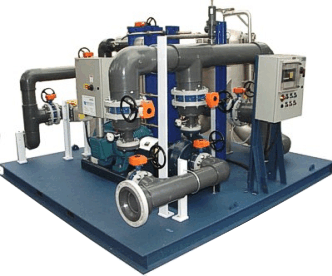OVERVIEW OF PROCESS SUPPORT SYSTEMS FOR THE
PHOTOVOLTAIC SOLAR CELL MANUFACTURING INDUSTRY
A white paper by Wastech Controls & Engineering, Inc.
![]()
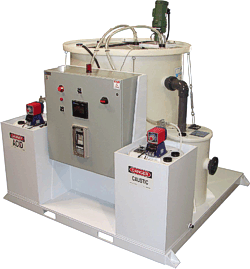 |
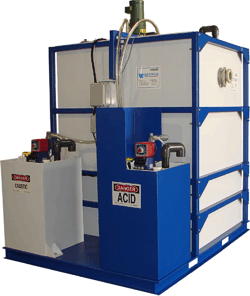 |
| Introduction
Wastech Controls & Engineering, Inc. can design, fabricate and commission a complete range of process support and waste water treatment systems for the photovoltaic (PV) solar cell manufacturing industry. This paper describes these systems and their application within a PV manufacturing facility. Wastech systems are available for the following areas: Waste Water Treatment
|
![]()
| Waste Water Treatment
Acid Waste Neutralization (AWN) systems adjust the pH of process waste water to within acceptable limits (typically 6 – 9) before discharging to the facility sewer connection. Reagent chemicals such as Caustic Soda and Sulfuric Acid are metered into reaction tanks at a rate proportional to the difference between the measured pH value and the target set point. Waste water sources may include process tools, de-ionized (DI) Water regeneration waste and scrubber blowdown. Incorporating the latest innovations in control strategy, such as feed forward control and hybrid mixing design, allow these systems to offer excellent performance and reliability with a smaller footprint and reduced chemical consumption with than traditional system designs.
Design Criteria:
Heavy Metal Removal systems treat rinse waters from Plating lines used to add soldering contacts to PV wafers. These rinse waters are acidic in nature and contain heavy metals such as copper, nickel and tin. Heavy Metal Removal can be a batch or continuous system, and uses a combination of pH adjustment, precipitation, flocculation, clarification and filtration to remove heavy metal oxides. Reagent chemicals may include Sodium Bisulfite, Sodium Metabisulfite, Sodium Thiosulftate, Ferric or Ferrous Chloride (among others) in addition to pH adjustment using Sodium Hydroxide and Sulfuric Acid. Wastech also offers the MetFloc™ chemical line that reduces the process steps, lowers chemical consumption and minimizes sludge generation. Using MetFloc™ simplifies the control strategy, requiring only pH adjustment; it does not rely on other measurements such as oxidation reduction potential (ORP). The clear water can be routed to an AWN or discharged directly, depending on the discharge limits. The filtrate is disposed of as solid waste.
Concentrated Bath Treatment is used to treat concentrated acid solutions received from the cleaning baths found at the start or in the intermediate steps of a Plating Line, or from the baths of a Rack Strip tool (located downstream of a Plating Line). These solutions often exceed 10% strength of Sulfuric or Nitric acids and have high concentrations of heavy metals. While discharges from the baths may be infrequent or periodic, the solutions cannot be treated by the AWN or Heavy Metal Removal systems due to the strong acid concentration, and they are often collected for off-site disposal. The Concentrated Bath Treatment System can accept these concentrated solutions, and neutralize them in batches to the point where the waste can be metered into a Heavy Metal Removal system. Design Criteria:
Design Criteria:
Ion Exchange (IX) is used to reclaim and reuse DI Water from rinse water waste. The system employs activated carbon filtration followed by Cation / Anion exchange to remove contaminant ions. This restores the water's resistivity and allows it to be reused in the process. The system uses Sulfuric Acid and Caustic Soda to regenerate the cation and anion resins. Inlet and outlet conductivity is measured to control the regeneration cycles and product water quality. The cation and anion resin canisters feature the Kinetico ® valve, which manages the counter-current regeneration cycles automatically. This patented valve technology eliminates dozens of actuated valves, simplifying system design and controls, as well as reducing consumption of regeneration chemicals. Standard systems are equipped with carbon filters, 5-micron filter bags at the inlet and outlet of the cation and anion canisters, and a UV lamp reactor at the discharge. Design Criteria:
|
![]()
Waste Collection Design Criteria (standard system):
|
![]()
Process Support SystemsHigh Purity Chemical Delivery Modules (CDM) deliver electronics grade chemicals from supply drums, totes or tanks to process tools located in the facility. These fully contained pump cabinets provide safe, reliable operation while preventing personnel exposure to corrosive or toxic chemicals. They feature welded polypropylene cabinets equipped with single or multiple air operated pumps. The supply and discharge tubing, fittings and wetted parts of instruments and pumps are constructed of Teflon® to assure the purity of delivered chemicals. CDM's are available for HF, HCl, NaOH, KOH, BOE, HNO3, H2SO4, H2O2, NH4OH, IPA and other chemicals on request. |
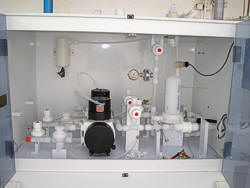 |
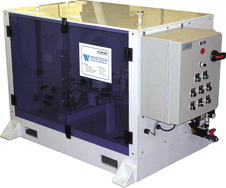 |
Design Criteria (standard system):
|
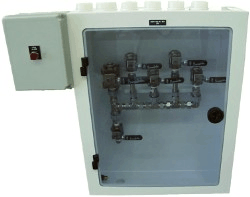 |
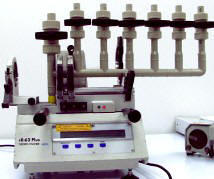 |
| Configuration Options:
Pump Options:
Configuration Options:
Configuration Options:
|
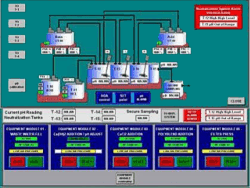 |
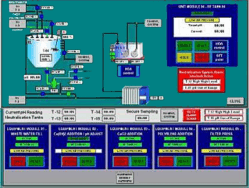 |
| Configuration Options:
|
![]()
 |
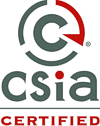 |
 |
Wastech Company ProfileWastech Controls & Engineering, Inc. (Wastech) was founded in 1987 by Paul Nicolas and has been in continuous operation under the same ownership and management since then. Wastech has become a nationally recognized process system integrator, offering automated process equipment and control systems for industrial applications. Wastech is staffed by engineers experienced in system design, fabrication, installation supervision, start-up assistance, and operator training. Wastech has specialized in turn-key packaged systems for industrial waste water treatment applications in semiconductor, solar cell, pharmaceutical, biotechnology, metal plating and food processing facilities. Wastech offers a complete line of pump lift stations, specialized chemical mixing, batching, blending and dispensing packages, process cooling and heating systems, and process control panels in addition to fully automated waste treatment processes, such as pH neutralization, vacuum distillation, advanced oxidation and ion exchange. Wastech has a UL508-approved panel fabrication shop with a reputation for reliable electrical and control designs with a high level of craftsmanship. Wastech is a Solution Provider for Allen Bradley and Rockwell Automation components and software. Wastech is a certified member of the Control System Integrators Association (CSIA), which means that an auditor has evaluated Wastech's business practices to insure that they conform to the CSIA's Best Practices and Benchmarks. See www.controlsys.org for more information. Wastech has developed its own blend of waste treatment MetFloc™ chemicals through the Pavlos Chemicals Company. These products offer surprising performance and cost effectiveness for removing heavy metal and other contaminants from waste water. Our experienced team of engineers and supplier partners insure that our solutions are delivered on-time and perform beyond the customer's expectations. |
|
|
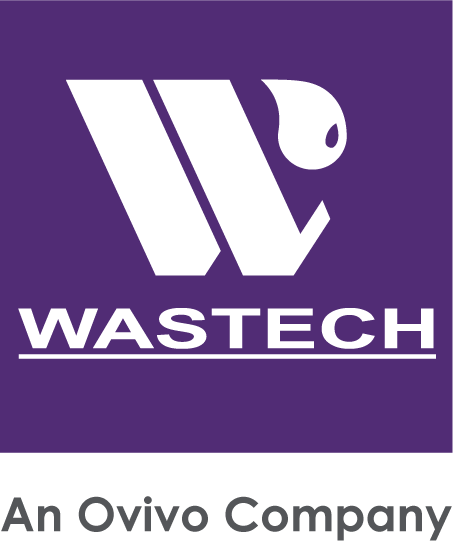

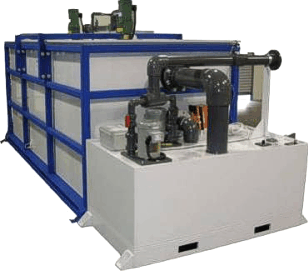
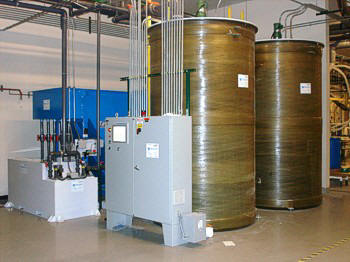
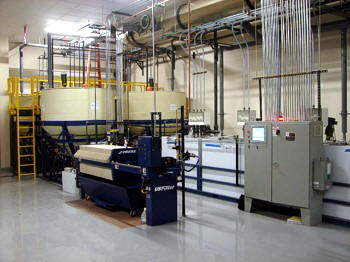
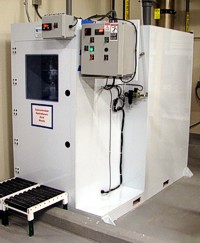 Concentrated Acid Waste Collection systems receive batch dumps of concentrated acid waste water (typically > 10% strength), and then transfer the waste to drums or totes for off site disposal. The acids present may be Hydrofluoric, Hydrochloric or Nitric. The drum cabinet is equipped with load cells to automatically stop the filling operation once a drum is full. This eliminates the need for a level sensor to be placed in the drum by an operator. Both the receiving tank and the drum cabinet are fully contained for personnel safety.
Concentrated Acid Waste Collection systems receive batch dumps of concentrated acid waste water (typically > 10% strength), and then transfer the waste to drums or totes for off site disposal. The acids present may be Hydrofluoric, Hydrochloric or Nitric. The drum cabinet is equipped with load cells to automatically stop the filling operation once a drum is full. This eliminates the need for a level sensor to be placed in the drum by an operator. Both the receiving tank and the drum cabinet are fully contained for personnel safety.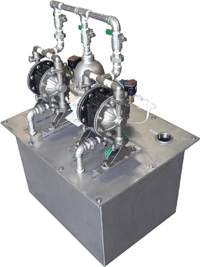 Solvent Waste Collection systems receive batch dumps of DI Water that contain appreciable amounts of flammable solvents, usually Isopropyl Alcohol (IPA). The solvent waste is automatically transferred into drums for off site disposal. These fire-safe systems are fabricated with stainless steel and either explosion–proof or intrinsically safe electrical components. Solvent waste may be delivered directly to the drums or to a receiving tank which will automatically transfer to drums, depending on the facility process requirements.
Solvent Waste Collection systems receive batch dumps of DI Water that contain appreciable amounts of flammable solvents, usually Isopropyl Alcohol (IPA). The solvent waste is automatically transferred into drums for off site disposal. These fire-safe systems are fabricated with stainless steel and either explosion–proof or intrinsically safe electrical components. Solvent waste may be delivered directly to the drums or to a receiving tank which will automatically transfer to drums, depending on the facility process requirements.